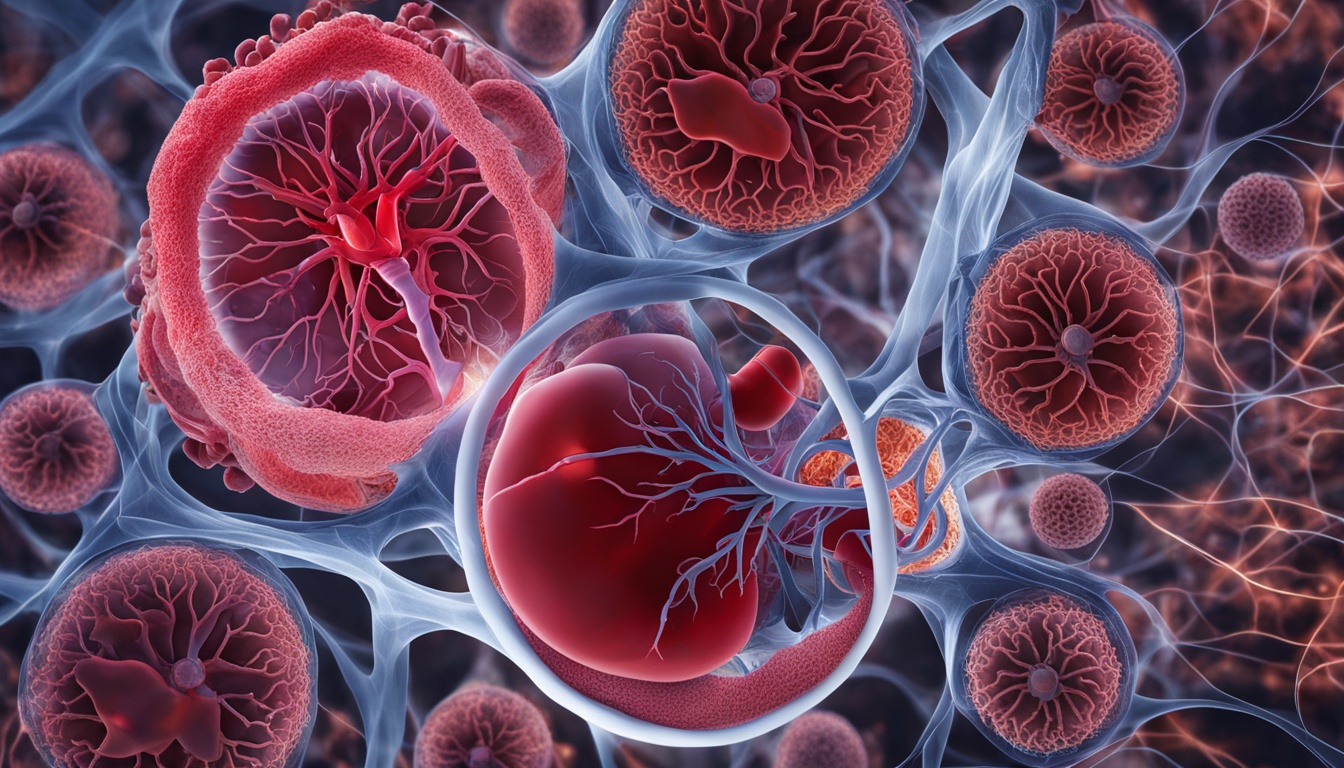Vascular rings happen in the aortic arch, affecting the trachea and esophagus. They form early in life when part of the aortic arch doesn’t go away. Some people with this issue might have genetic deletions, like the band 22q11 deletion.
Right aortic arch with an odd left subclavian artery, and left aortic arch with right descending aorta are common types. Signs of vascular rings can be different, but many people face trouble breathing, eating, and get sick often.
Doctors use imaging tests like barium swallow and CT scans to figure out what’s happening and how bad it is. Usually, surgery is needed to make things better and help the symptoms go away.
But, there’s new hope. Research shows that stem cell therapy might treat vascular rings. Stem cells can become different types of cells, including those that help blood vessels. This could be a new way to treat vascular rings in the future.
Key Takeaways:
- Vascular rings are congenital anomalies in the aortic arch that cause compression of the trachea and esophagus.
- The most common types of vascular rings include double aortic arch, right aortic arch with aberrant left subclavian artery, and left aortic arch with right descending aorta.
- Vascular ring symptoms can include respiratory difficulties, swallowing problems, and recurrent respiratory infections.
- Diagnostic imaging, such as barium swallow and CT, is used to identify the specific type of vascular ring and assess the extent of compression.
- Surgical treatment is typically recommended to alleviate the compression and improve symptoms, but stem cell therapy shows promise as a potential future treatment option.
Types of Vascular Rings and Associated Symptoms
Vascular rings can compress the trachea and esophagus. There are several types. The most common ones are:
- Double aortic arch: Both the right and left fourth embryonic arches persist. This forms a complete ring around the trachea and esophagus.
- Right aortic arch with aberrant left subclavian artery: In this kind, the left fourth arch goes away. The right arch then gives off the left subclavian artery behind the esophagus.
- Left aortic arch with right descending aorta: This type is very rare. It includes a left aortic arch and a ring formed by the closed right arch.
Vascular rings have various symptoms. They often affect breathing and swallowing. These include wheezing, stridor, trouble swallowing, and frequent chest infections. It’s crucial to diagnose them early and treat appropriately to lessen compression effects.
Double Aortic Arch:
This type forms a common vascular ring. Because the right and left fourth embryonic arches both remain. They create a full ring around the trachea and esophagus. This often leads to problems breathing and swallowing.
If someone has a double aortic arch, they might wheeze or have infections. Symptoms’ seriousness depends on how much the structures are compressed. Doctors use tests like barium swallow and CT scans to diagnose it.
Diagnosis and Treatment Options for Vascular Rings
Doctors diagnose vascular rings by checking for breathing problems like stridor during the exam. They use tests like a barium swallow and CT scans. These tests show if the blood vessels are compressing the airway.
A barium swallow is a simple test that shows a full picture of the ring and how tight it squeezes the airway. A CT scan, meanwhile, gives doctors a 3D look at the issue and any surrounding problems.
Surgery is the main way to fix a vascular ring. The kind of surgery needed will vary. But it usually involves opening up the compressed area so it doesn’t squeeze the airway anymore.
In recent times, scientists have been looking at using stem cells to treat vascular rings. Stem cells can turn into many different cell types, including those for building blood vessels. This is still new, and more research is needed to see how well it works and if it’s safe.

